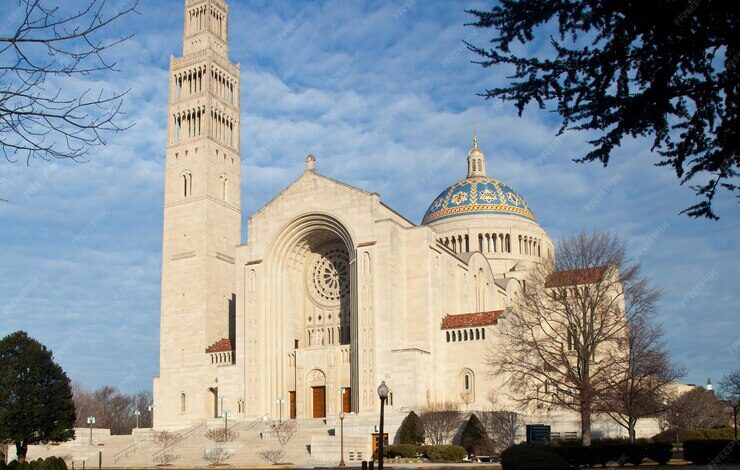Discovering Mosquee Al Nasr Koekelberg A Community’s Heartbeat

Nestled in the vibrant district of Koekelberg, the Mosquee Al Nasr stands as a beacon of faith, culture, and community. This landmark is not just a place of worship; it’s a testament to the resilience and unity of the community it serves. In this blog post, we will explore the historical significance, architectural marvels, and the role this mosque plays in promoting interfaith dialogue and community engagement. Whether you’re a member of the congregation or simply curious about this cultural gem, read on to discover the many facets of the Mosquee Al Nasr Koekelberg.
The Historical Significance of Mosquee Al Nasr Koekelberg
The Mosquee Al Nasr Koekelberg has a rich history that dates back to its founding. It was established to serve the growing Muslim population in the area, providing a place for spiritual growth and community bonding. Over the years, it has become a symbol of cultural heritage and religious freedom.
The mosque’s founders envisioned a space where people could come together, irrespective of their backgrounds. This vision has been realized through the mosque’s commitment to inclusivity and community service. The historical significance of the Mosquee Al Nasr Koekelberg cannot be overstated, as it continues to be a pillar of strength for its congregation.
In addition to its religious functions, the mosque has played a crucial role in preserving the cultural identity of the Muslim community in Koekelberg. It stands as a reminder of the community’s roots and their ongoing contributions to the city’s cultural mosaic.
Architectural Marvels of Mosquee Al Nasr Koekelberg
One of the most striking features of the Mosquee Al Nasr Koekelberg is its architecture. The mosque boasts a stunning dome and a towering minaret, both of which are architectural masterpieces. The dome, with its intricate designs and vibrant colors, is a sight to behold and serves as a focal point for the mosque’s overall aesthetic.
The minaret, standing tall beside the dome, is another architectural wonder. It not only adds to the visual appeal of the mosque but also serves a functional purpose. Traditionally, minarets are used to call the faithful to prayer, and the Mosquee Al Nasr’s minaret is no exception. Its presence adds a sense of grandeur and solemnity to the mosque’s overall design.
Inside the mosque, the architectural brilliance continues. From the beautifully designed prayer hall to the intricate tile work, every aspect of the mosque’s interior is crafted with attention to detail. These features make Mosquee Al Nasr Koekelberg not just a place of worship but also a work of art.
Religious and Cultural Activities
The Mosquee Al Nasr Koekelberg is a hub of religious and cultural activities. Daily prayers are held here, offering a serene space for worshippers to connect with their faith. The mosque also hosts Friday sermons, which are well-attended by the community and often touch upon relevant social and spiritual topics.
Educational events are another highlight at the Mosquee Al Nasr. From Quranic studies to lectures on Islamic history and ethics, the mosque provides various opportunities for learning and personal growth. These events are open to all and aim to enrich the spiritual lives of the attendees.
Cultural activities also play a significant role in the mosque’s calendar. Events celebrating Islamic festivals, community iftars during Ramadan, and family-friendly gatherings are regularly organized. These activities not only strengthen the bonds within the Muslim community but also invite people from other backgrounds to partake in the celebrations.
Promoting Interfaith Dialogue
One of the most commendable aspects of the Mosquee Al Nasr Koekelberg is its commitment to promoting interfaith dialogue. The mosque regularly hosts events that bring together people of different faiths to discuss common values and foster mutual understanding. These dialogues are crucial in breaking down barriers and building a more inclusive society.
Interfaith events at the mosque often feature guest speakers from various religious backgrounds. These discussions provide a platform for sharing perspectives and learning from each other. The mosque’s efforts in this area have been widely appreciated and have made significant strides in promoting peace and harmony.
In addition to formal events, the mosque also encourages informal interactions between community members of different faiths. These interactions, whether over a cup of tea or during a community event, help build personal connections and dispel misconceptions.
Personal Stories from the Congregation

The true essence of the Mosquee Al Nasr Koekelberg can be felt through the personal stories of its congregation members. Many individuals have found solace and a sense of belonging within the mosque’s walls. These stories highlight the mosque’s impact on their lives and the wider community.
One such story is that of Fatima, a long-time member of the mosque. She shares how the mosque has been a source of strength during challenging times, providing not just spiritual guidance but also emotional support. Her story is a testament to the mosque’s role in nurturing a supportive community.
Another story comes from Ahmed, a young professional who moved to Koekelberg for work. He recounts how the mosque helped him integrate into the community and find like-minded friends. For Ahmed, the Mosquee Al Nasr is more than just a place of worship; it’s a second home.
These personal narratives underscore the mosque’s importance in the lives of its members. They reveal a deeper layer of the mosque’s influence, one that goes beyond its physical structure and religious activities.
Visiting Mosquee Al Nasr Koekelberg
For those interested in visiting the Mosquee Al Nasr Koekelberg, it’s essential to know the logistics. The mosque is open to visitors during specific hours, allowing both Muslims and non-Muslims to explore its beauty and learn more about its significance.
While visiting, it’s important to dress modestly and respect the mosque’s customs. Non-Muslims are encouraged to observe quietly and ask questions respectfully. Special guided tours are sometimes available, providing deeper insights into the mosque’s history and architecture.
The mosque also hosts several special events throughout the year, which are open to the public. These events offer a unique opportunity to experience the vibrant culture and community spirit that define the Mosquee Al Nasr Koekelberg.
Conclusion
The Mosquee Al Nasr Koekelberg is more than just a place of worship; it’s a vibrant community hub that enriches the lives of its members and fosters a spirit of inclusivity and understanding. From its stunning architecture to its diverse range of activities, the mosque stands as a testament to the strength and unity of the community it serves.



